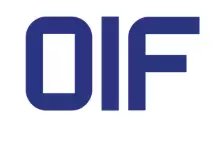OIF has kicked off four new projects:
224G PAM4 protocol agnostic link training for electrical interfaces project
Electrical interface link training holds considerable significance throughout the industry. This project will define communication method, messaging format and contents, training patterns, states and sequences, diagnostics and fault handling, etc. for link training of a 224G PAM4 class electrical link. The objective is to enhance overall link performance, a critical factor, particularly under challenging conditions, to establish a functional connection.
As part of this initiative, the CEI (Common Electrical IO) framework will be expanded with an additional tool to encompass a comprehensive solution, reinforcing OIF’s leadership in the electrical/SERDES domain.
“This project is critical for OIF, yielding a standardized solution that seamlessly fosters SERDES interoperability and implementation, transcending the boundaries of specific applications,” said David Stauffer, OIF Physical & Link Layer Working Group Chair and Kandou Bus, S.A. “Through collaborative efforts with other industry groups, we aim to forge a consistent industry-wide solution that simplifies implementation.”
1600ZR Project
The 1600ZR project will define a power optimized solution for a multi-vendor interoperable 1600 Gbps coherent optical interface, with a focus on Data Center Interconnect (DCI) scenarios. This Implementation Agreement (IA) will create a comprehensive electrical/protocol/optical framework that facilitates realization into pluggable modules. It will also establish a reference point for additional applications that contribute to the growth of the coherent ecosystem.
“It has become clear that multiple evolution paths from 400ZR will be required in DCI transport,” said Ian Betty, OIF Board Member and Ciena. “While the 800ZR IA development is still ongoing, the group has started a parallel project to address the complexities of supporting 1.6T Ethernet clients in single span DCI applications for reaches of at least 80km. OIF is leading the industry by creating an IA for an interoperable 1.6T Ethernet coherent line interface designed for ZR/DCI applications. This project further validates that OIF is the platform for next-generation coherent line interface discussions and to facilitate the development of innovative applications and architectural solutions. We encourage network operators to actively participate in these efforts to help shape the specifications to best meet their needs.”
Data Center Storage and Optical Multi-layer Coordination
Transaction failures in the financial industry are sometimes attributed to network issues such as jitter, intermittent disconnection and bit errors, caused by unstable DCI links. Fast fault detection and recovery of optical connections can be leveraged to address these issues and support new DC applications, by coordinating between the application layer and optical connections in the DCI network. This project will result in a white paper that will delineate anticipated scenarios, crucial technical requirements, and potential multi-layer protection solutions, and provide a comprehensive gap analysis regarding the coordination of storage and optical connections.
“This project stands as a testament to OIF’s mission to develop interoperable solutions for challenging optical interworking applications like DCI,” said Jia He, OIF Networking & Operations Working Group Chair and Huawei Technologies Co., Ltd.
System Vendor Requirements Document for Energy Efficient Interfaces
This project will result in a requirements document for Energy Efficient Interfaces (EEI) through input gathered by system vendors from end users and provide a list of prioritized applications and a basic set of requirements for the next generation of energy efficient electrical and optical links. A primary objective of this work is to provide guidance to the EEI Framework Project and future IAs based on the framework at the OIF or other standards organizations.
“This project introduces a new area of standards for the OIF, expanding its ecosystem and industry influence,” said Jeffery Maki, OIF Physical Layer User Group Chair and Juniper Networks. “A key objective of this project is to outline user-driven prerequisites that will shape the trajectory of future EEI initiatives within the organization.”
The announcement follows OIF’s hybrid Q3 Technical and MA&E Committees Meeting, which was held last monght in Vancouver.



